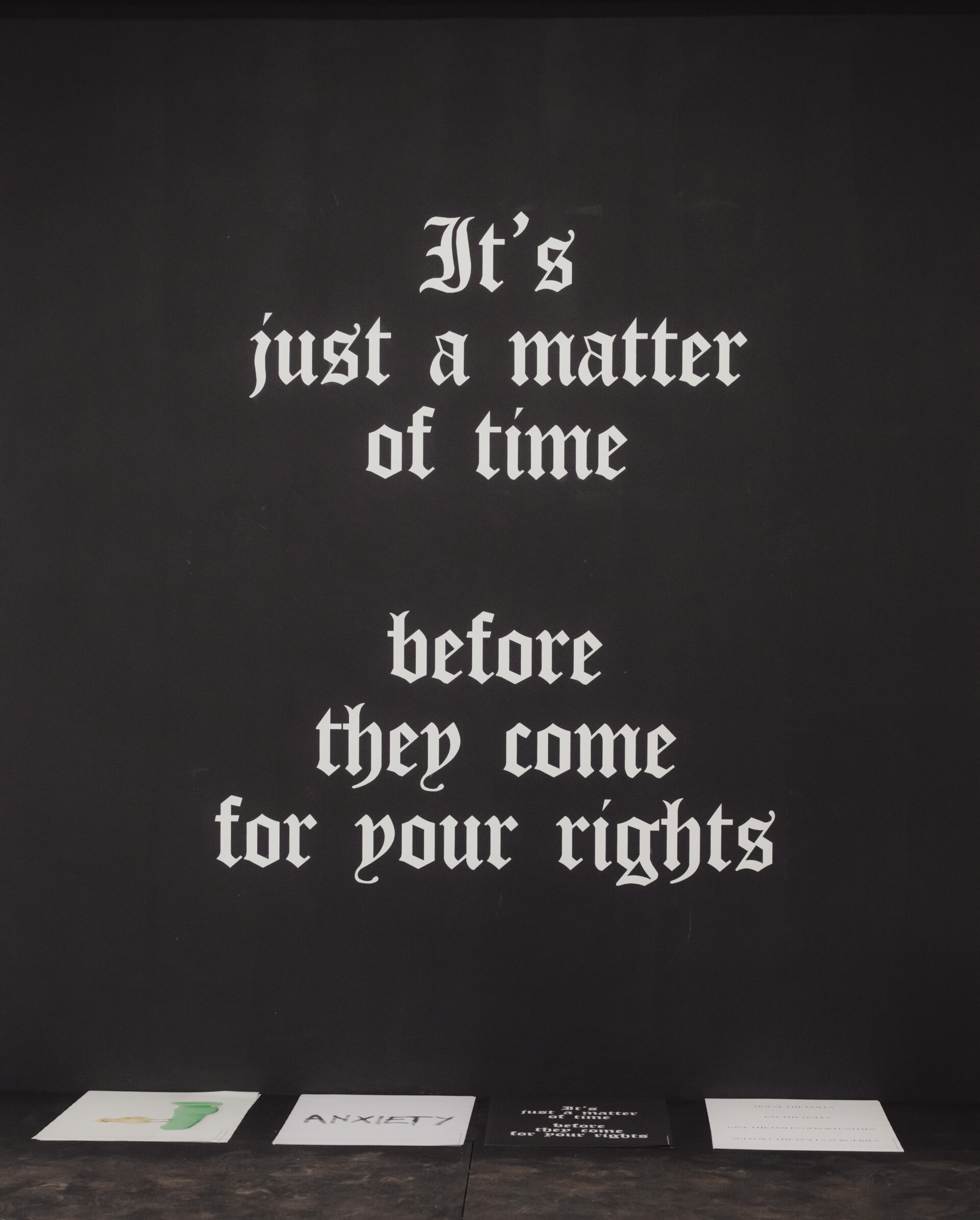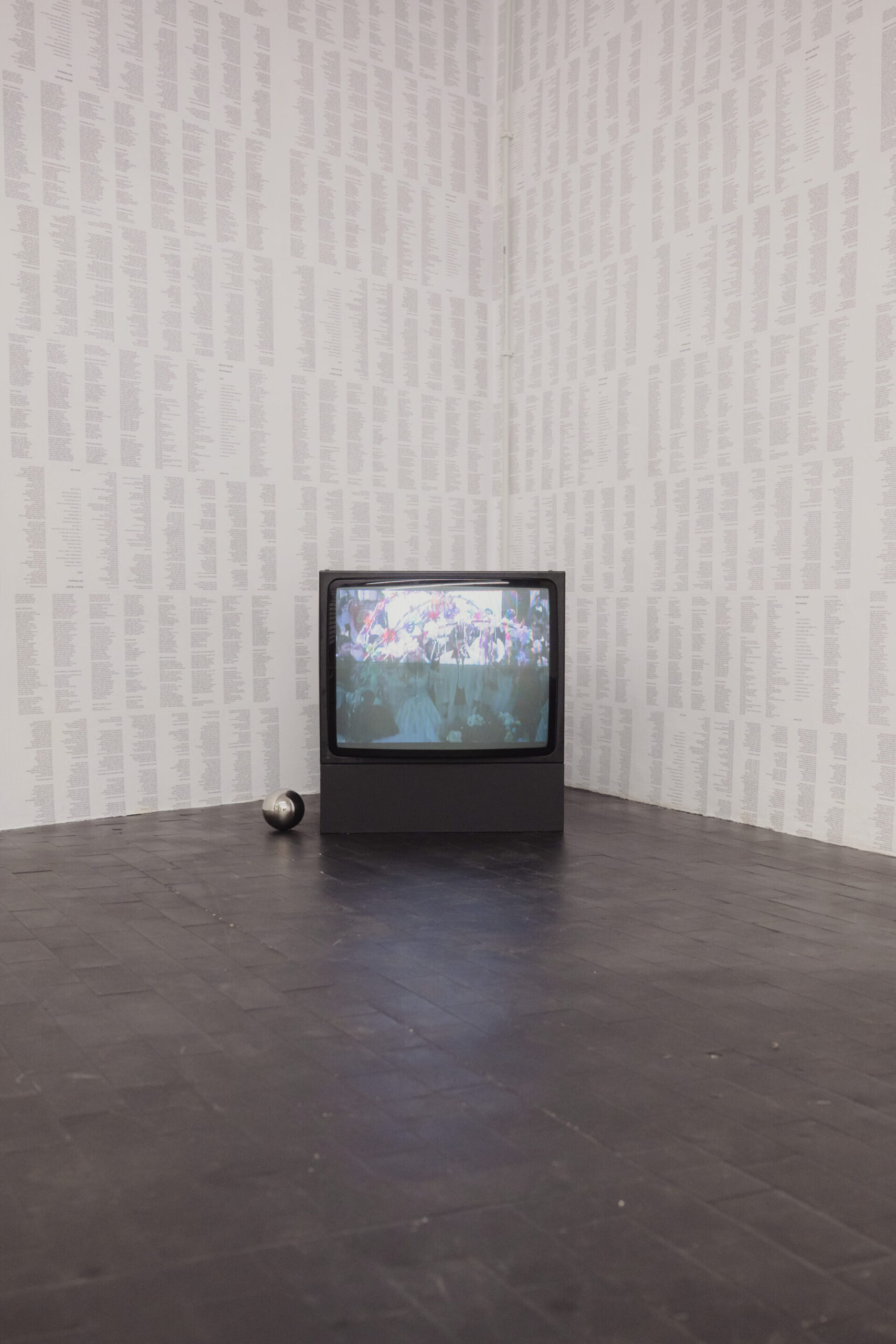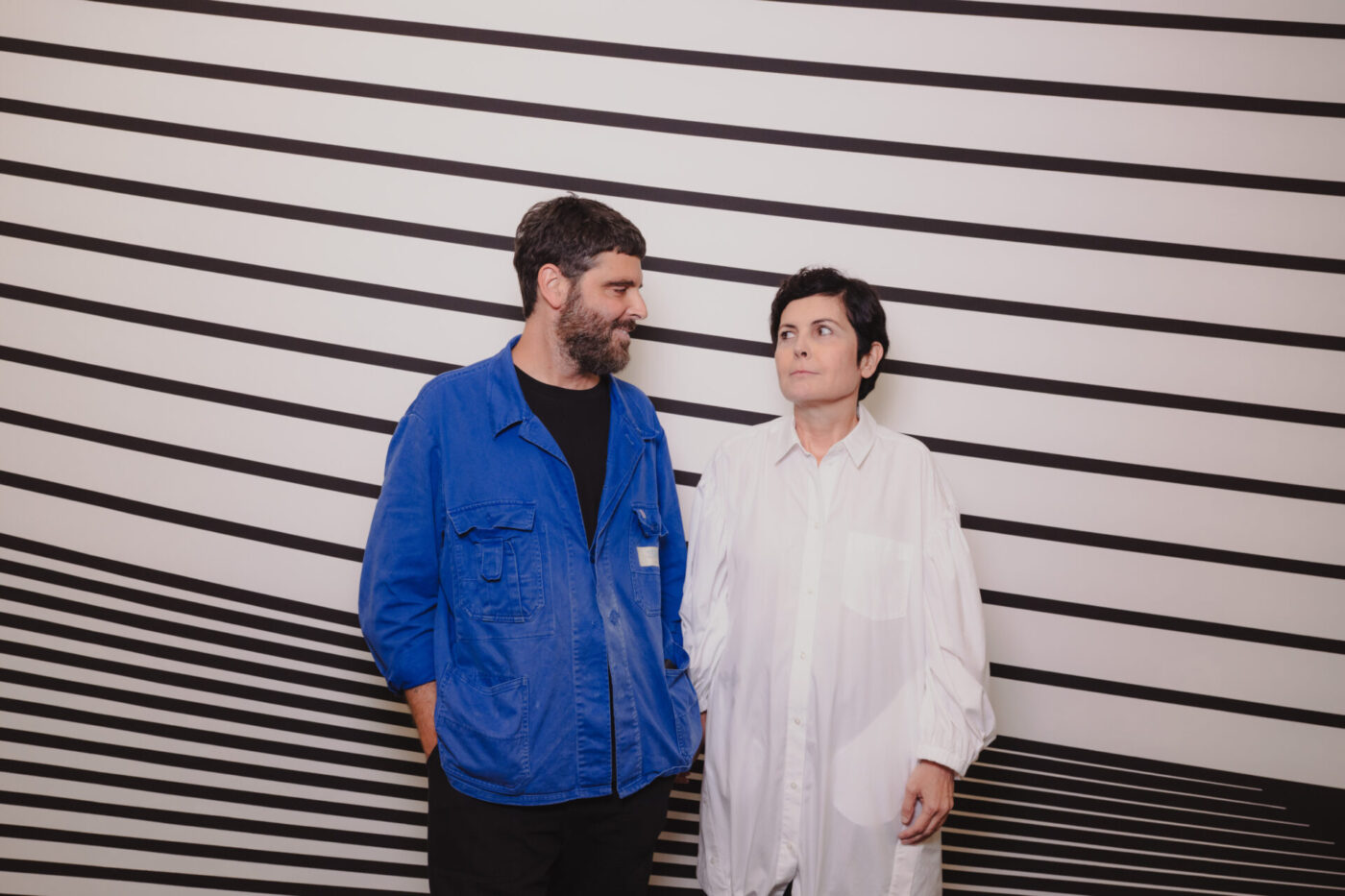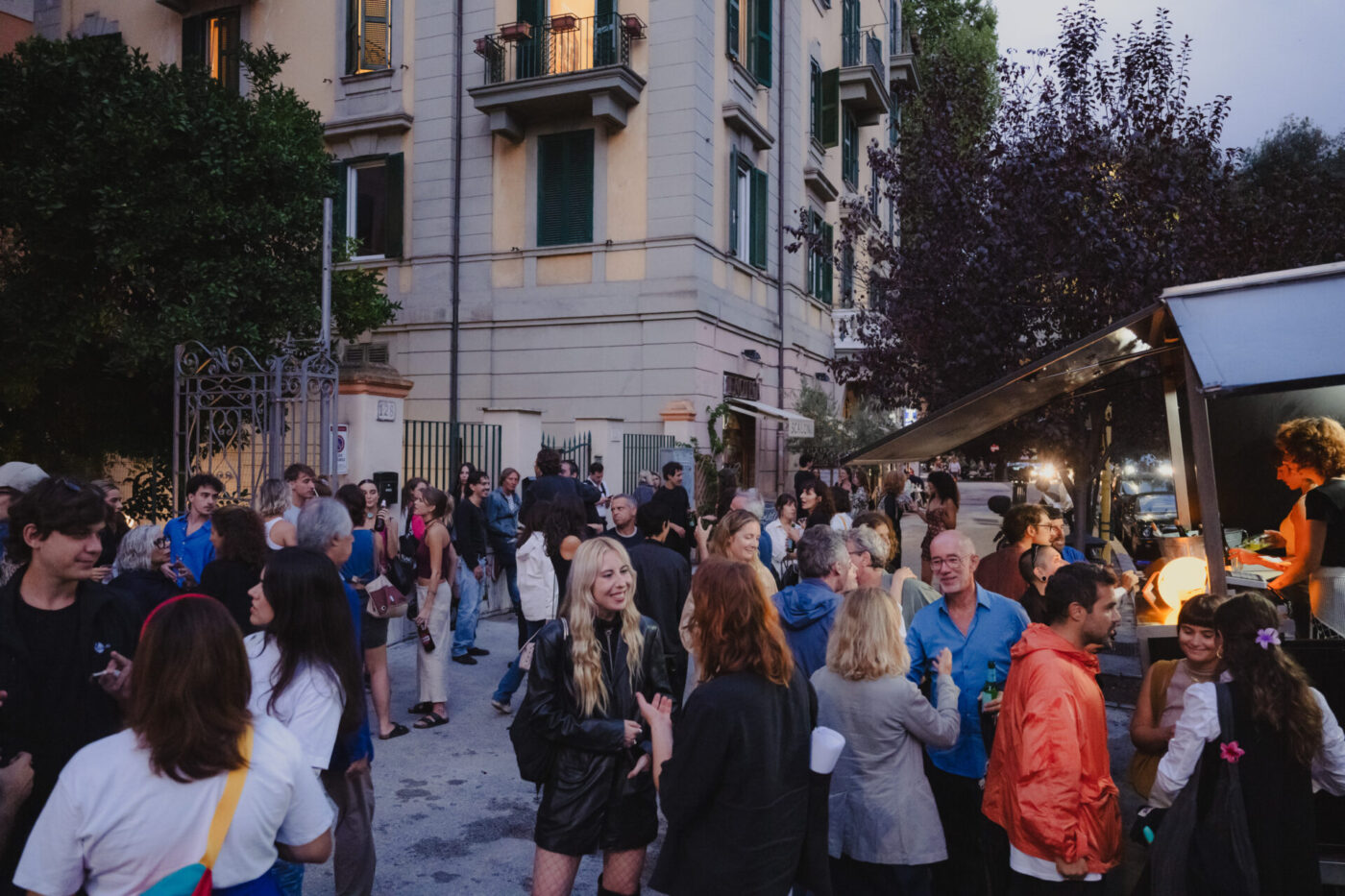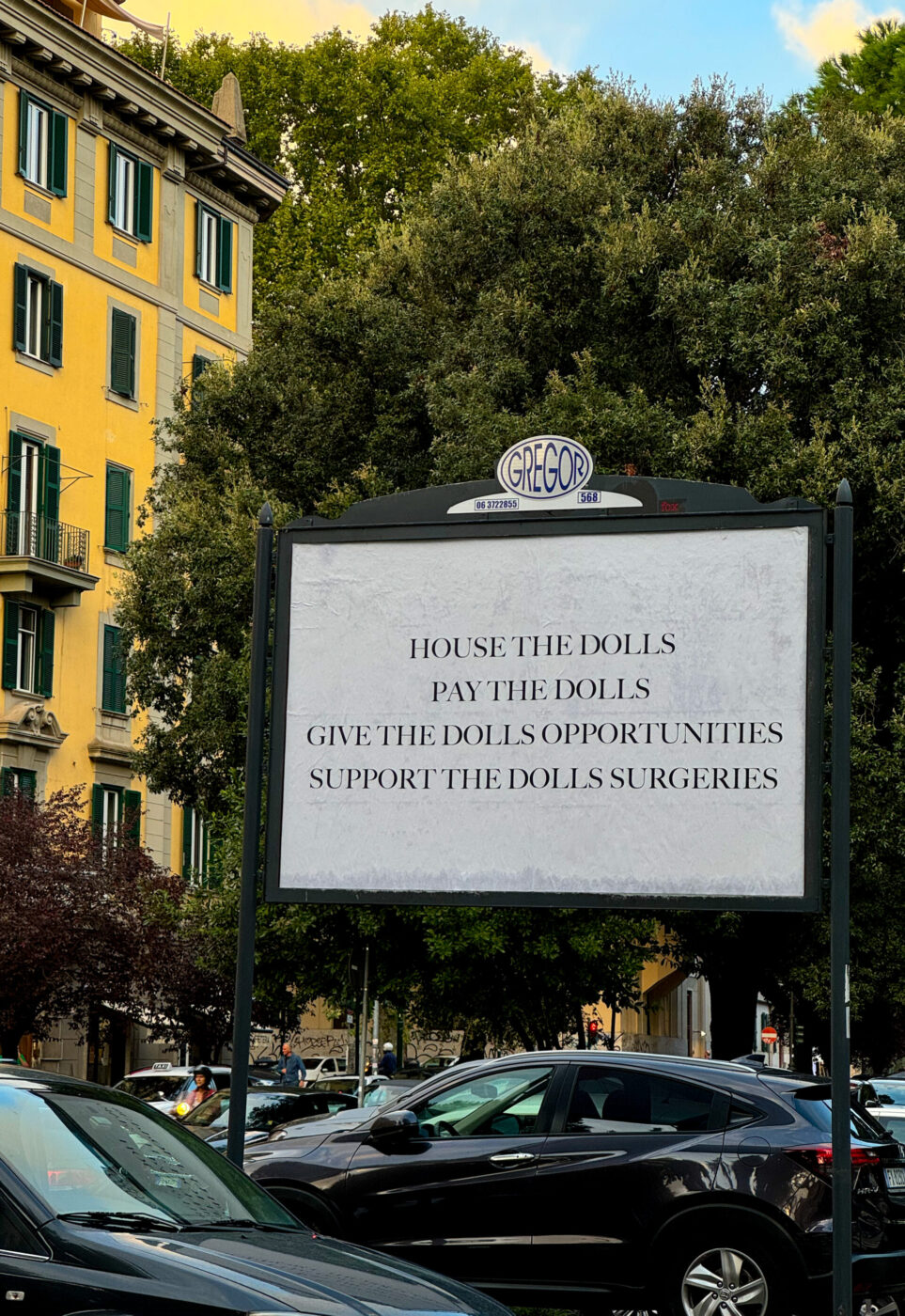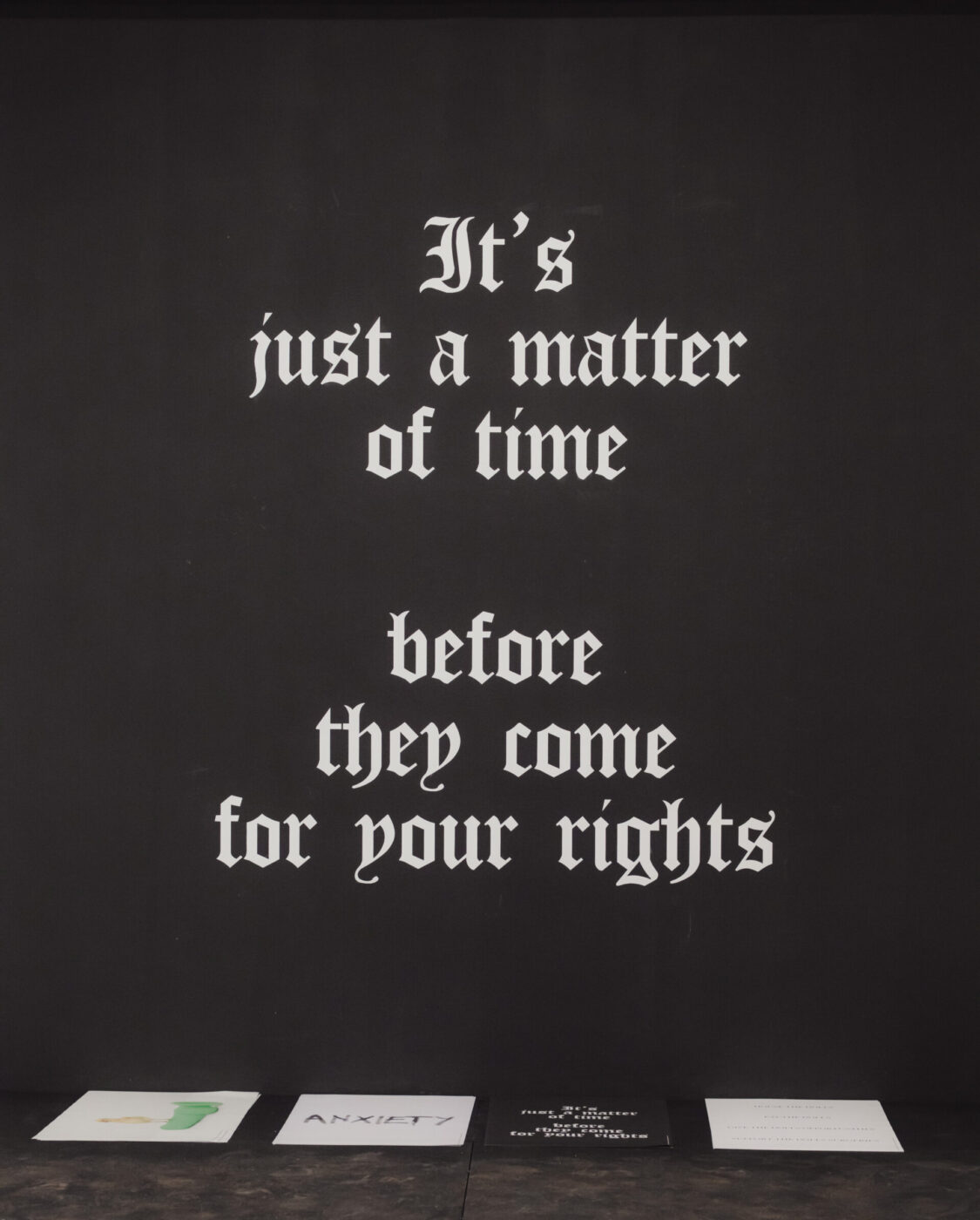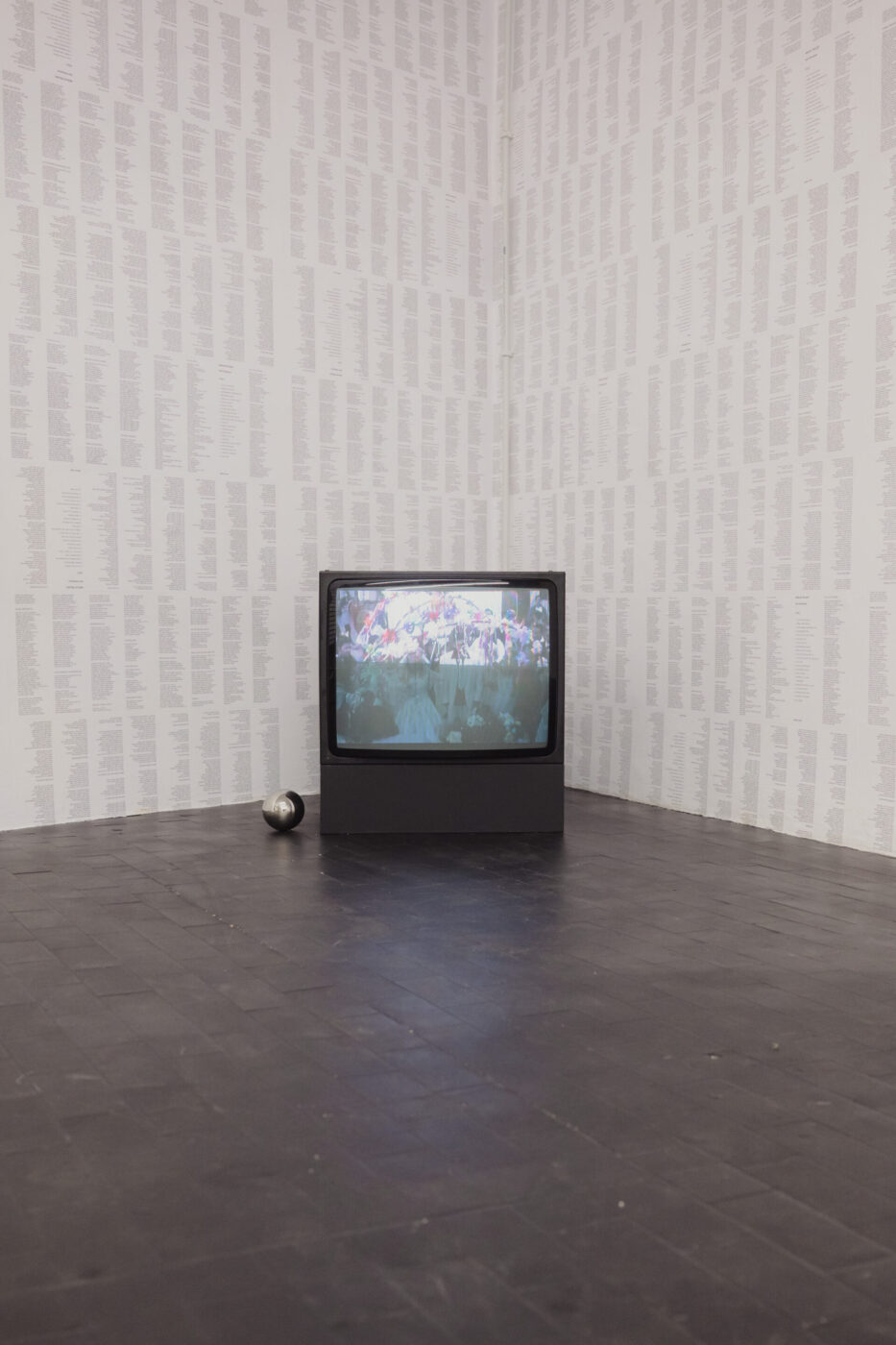On September 10th in Rome, the Basement Art Assembly Biennial (BAAB) opened Issue 00 in a once-abandoned cellar where the crowd felt more Berlin than Roman: black denim, oversized shirts, easygoing and unslick. Curators Andrea Baccin and Ilaria Marotta—founders of CURA., a curatorial and editorial platform, and Basement Roma, an experimental non-profit art center—built the biennial around one idea: get people together, keep it open, let the city set the tempo.
Inside, Carsten Höller’s Pill Clock (Blue and White Pills) (2015) marks time with a blue-and-white capsule dropping every three seconds while neighbors lean from their windows to watch the vernissage. David Horvitz’s Make a Garden Everywhere invites visitors to bring a plant to grow in the Basement’s garden; in return, guests can pick up seeds in a small paper envelope to take home. Even the bar is designed to loop you back in. Davide Balula’s Roots of Flowers (2025)—vodka infused with locally sourced red valerian root, lavender, chicory root, and fennel—arrives with a small pebble you return after drinking. Karl Holmqvist’s Untitled Walldrawing, drawing on his recent book Berlin Trilogy PART I, wraps the walls in poem-fragments that read like notes from a European Babel.
Admission is free. The act of meeting is part of the work, and BAAB takes its cue from places where conversation is the main event. Baccin and Marotta nod to Berlin’s Times Bar, Calla Henkel and Max Pitegoff’s weekly stage for performances and talks, but keep the format Roman with regular appointments, open doors, and local artists invited to present, perform, and meet visitors. The idea is simple and generous—assemble again and again—in line with the biennial’s theme, “Assemblee sotterranee e nuove tribù” (“Underground assemblies and new tribes”).
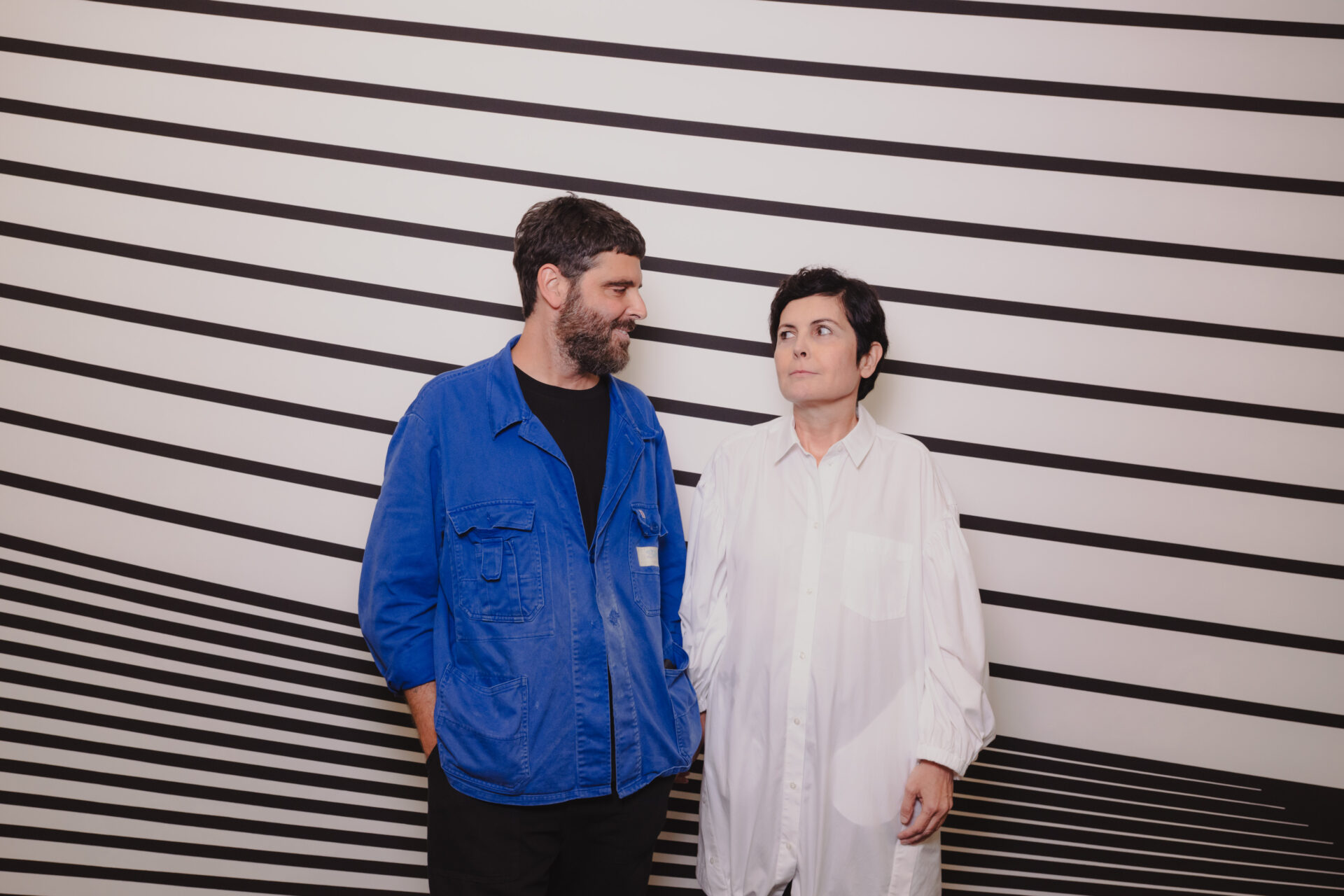
Curators Andrea Baccin and Ilaria Marotta
The “sotterranee” idea came courtesy of Anthony Huberman, Artistic Director of the John Giorno Foundation in New York and member of BAAB’s advisory board, who said: “Being basement-based is a state of mind.” Kitchens are for cooking, dining rooms for eating, bedrooms for sleeping. Basements remain undefined: underground, hidden from view, open to interpretation. When people enter them, they are free to do anything.
When it came to choosing the location for their basement, Rome became a not-so-obvious choice. The Eternal City is often described as weighed down by its own history, a hard place for contemporary art to grow. The city’s past is everywhere, and museums, funding, and tourism lean toward antiquity and the Renaissance, leaving the contemporary scene with minimal space and attention as it still revolves mostly around public museums like MAXXI and MACRO.
But this team believed otherwise. “Rome is a city you want to live in,” Baccin says, “and come back to after the art-fair rush in Berlin or Milan, because its beauty slows you down to think.” That breathing room also shows what’s missing: spaces to gather. It’s a gap that BAAB aims to fill with a privately funded, non-institutional space—free from the intellectual and practical constraints of public funding.
Ilaria Marotta continues, “Rome is less saturated than other cities, more surprising.” With fewer overlapping openings and less calendar crush, there’s more room to experiment with private exhibitions and events. And, as most of the country’s commercial energy sits in Milan, Rome reads more indie by default.
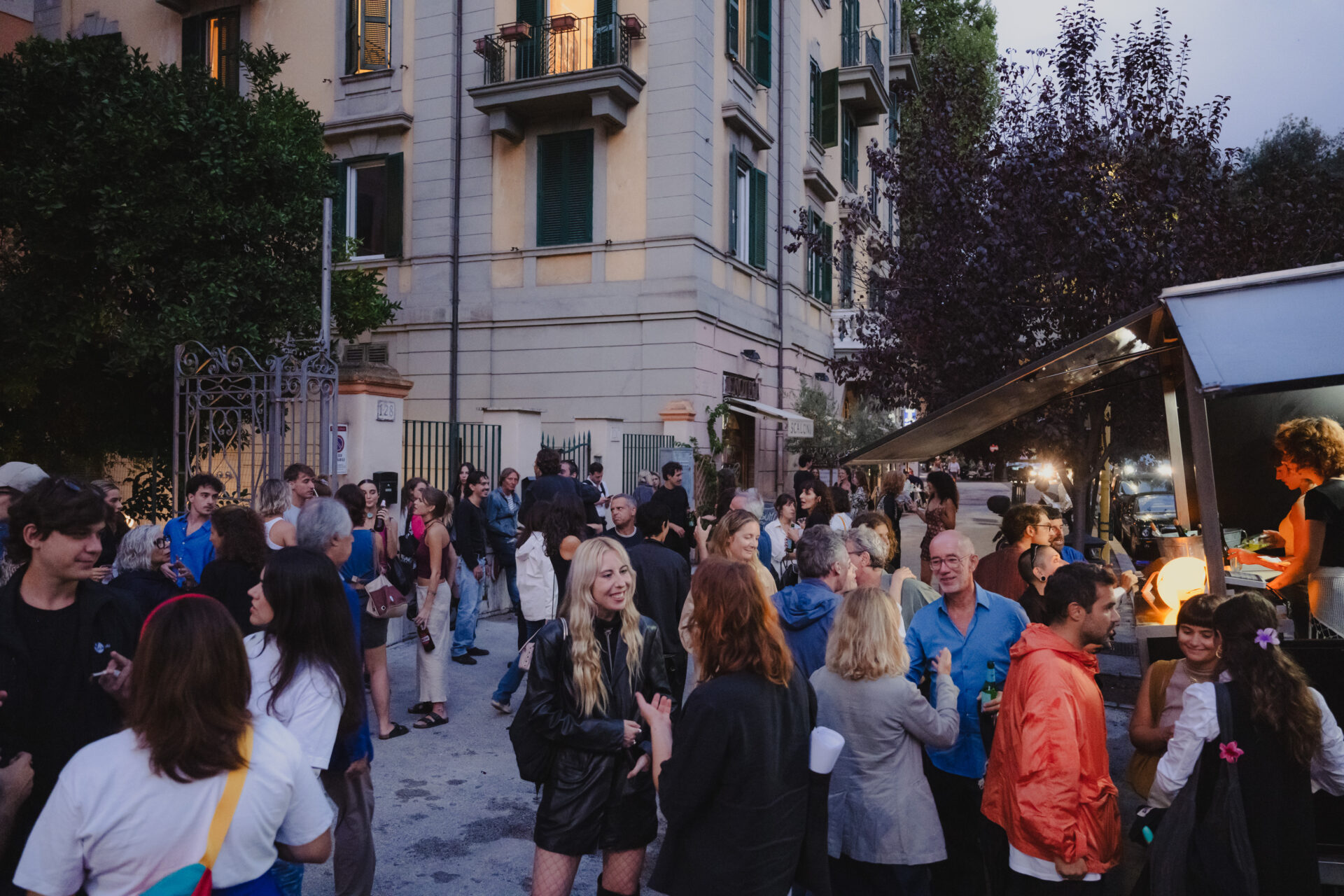
A local crowd hanging out outside the exhibition; Photo by Niccolo Campita
“It’s easier now to bring international artists here and get them excited than in Paris,” she argues. The roll call proves the point—Jeremy Deller, Carsten Höller, Mark Leckey, Claudia Comte, Danielle Brathwaite-Shirley, Calla Henkel & Max Pitegoff, Nora Turato—but context matters beyond the room. This summer, Italy cut VAT on art from 22% to 5%, moving from one of the EU’s highest rates to the lowest after pressure from art-market stakeholders, who argued the old rate sent sales abroad and squeezed margins. Dealers hope the change will stabilize programming and renew support for emerging artists, giving exhibitions like BAAB the space to thrive.
And thrive it has. Outside the basement, drinks pour from an ape-car parked by the entrance run in collaboration with Fischio, Prati’s trendiest bar. The once-abandoned courtyard now works as a soft border between exhibition and street; people come for the opening and stay to talk, the way you do in Rome, over a glass, with time to listen. On weekends, neighbors drift in, sit on the steps with newspapers, and children play in the courtyard. Daily life slips easily into the show.
After the exhibition, the evening doesn’t dissipate into exclusive dinners. It stays local with pasta at Da Dante, a Prati neighborhood staple, where steaming bowls of amatriciana slide out of the kitchen while waiters tease regulars. The next morning, it’s breakfast at Casa Matti, Baccin notes, where last night’s talk picks up over specialty coffee. Tradition and experiment share the same table, and maybe this is exactly what excites artists about the Eternal City.
Issue 00 runs through November 6th in Prati.
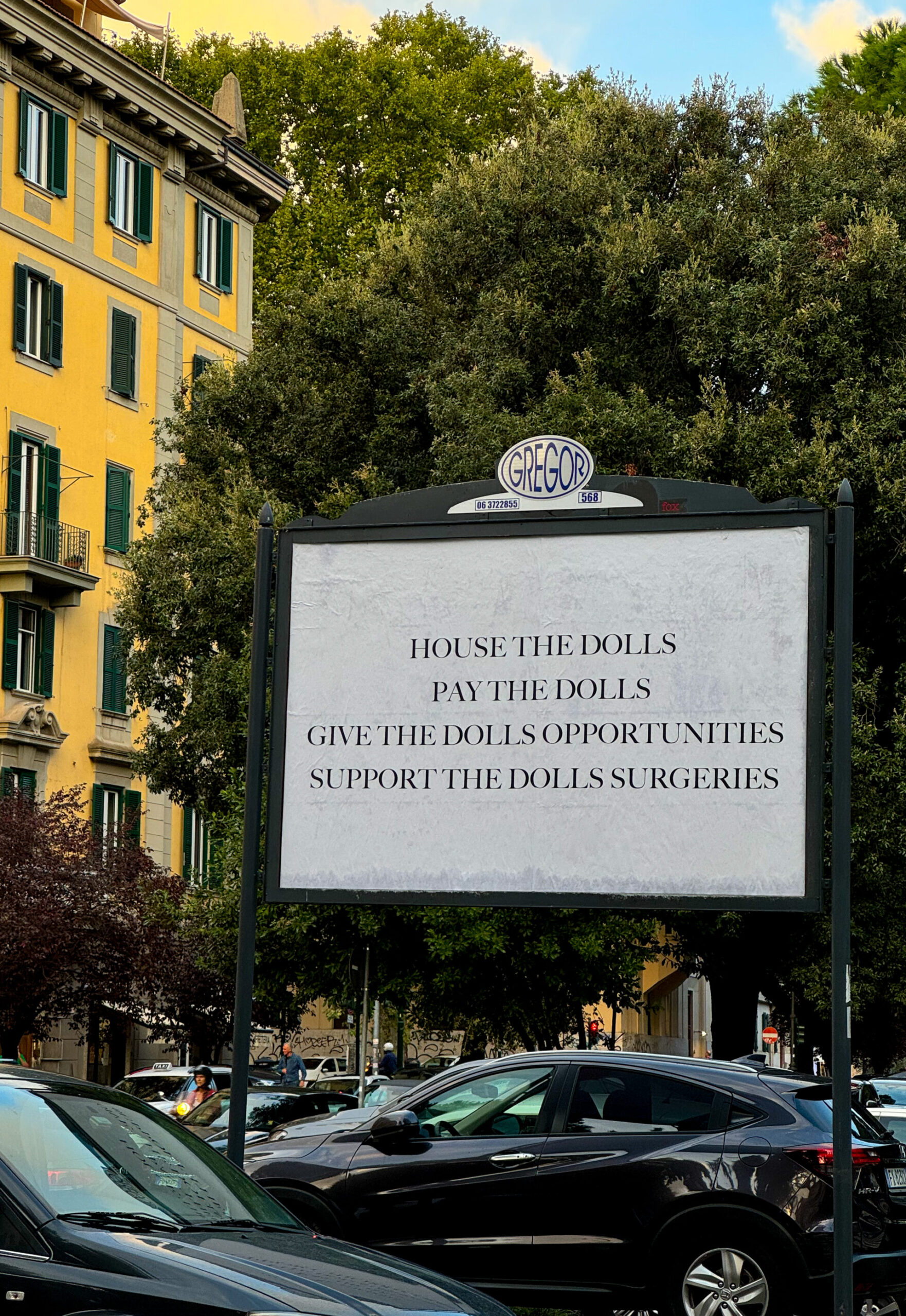
Photo by Giulia Kappelin Cingolani
